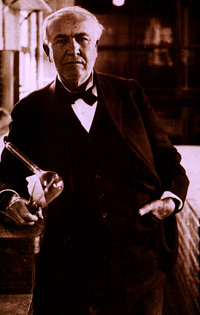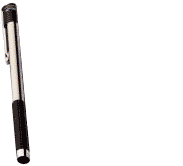 |
 |
 |
 Technology News | May 2006 Technology News | May 2006  
The End of Light Bulbs?
 Ned Potter - ABC News Ned Potter - ABC News


| | Thomas Edison did not invent the incandescent bulb but he did make it practical and commercially successful. | 
| | An artist's rendering of the ultimate portable communication device. |
There's that famous image from 1879 of Thomas Edison, the tireless innovator, trying a hundred different combinations of materials until he got the light bulb right, and then sitting with it for 40 hours until it burned out.

Edison did not invent the incandescent bulb - Humphry Davy had a crude version in 1809 - but he did make it practical and commercially successful. There have been improvements since his time - the filament is no longer carbon; the bulb contains inert gas instead of an imperfect vacuum - but the design hasn't changed much in a century.

Light bulbs are great - they're reliable, cheap, and bright - but they get hot, burn out, and they drink energy. Flourescent light is more efficient, but its glow isn't exactly romantic.

So for the last 13 years, a group of chemists has been at work on OLEDs - that's Organic Light-Emitting Devices - and they report in today's issue of Nature that they've made a breakthrough. They've developed a transparent, thin film that gives off bright white light when a small amount of current is run through it.

A quote from Mark Thompson, chemist at the University of Southern California: "This process will enable us to get 100 percent efficiency out of a single, broad spectrum light source." (Typically, about 75% of the potential energy in most light sources is wasted, often as heat.)

Thompson and his co-author, Stephen Forrest of the University of Michigan, are getting funding from the Energy Department and a New Jersey firm called Universal Display Corp. They have all sorts of ideas about sheets of OLEDS that could be spread over glass, so that you'd get natural-looking light from your windows at night. Theoretically, you could have a wall of light, or a curtain - or the same technology, since it can be controlled pixel-by-pixel, could be used for a very-flat-screen TV, or a computer screen that unrolls from a pen, or, perhaps, for what USC calls "the ultimate inconspicuous flat-panel television."

There are still plenty of hurdles - better plastics are needed, large-scale manufacturing is still to come - but Universal Display reports it already has a practical way of making a cell-phone screen that won't drain your battery. | 
 | |
 |



